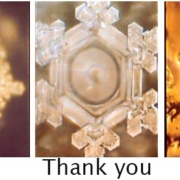A Life Review Can Help You Redirect
What has been your practice at year end in recent years? Do you float along on the river wherever it takes you, or use your paddle to direct your path? You can take a different approach this year. Starting with a life review can help you redirect if you aren’t where you want to be.
As we close out one year and begin another, it’s a great opportunity to take some time to reflect on the past twelve months. What have you accomplished, both small and large? What were your highlights and lowlights? What did you learn?
Taking a good, hard look at your life can be challenging, but it’s also incredibly powerful. It allows you to see where you’ve been and where you want to go. It gives perspective on your choices and helps you learn from your mistakes. And perhaps most importantly, it allows you to set realistic goals for the year ahead.
How To Do A Life Review
A life review is simply a process of reflection. You can do it by yourself or with a friend or therapist. There are no right or wrong answers, and there is no specific format you need to follow. The only goal is to take an honest look at your life and see where you’ve been and where you want to go.
The benefits of doing a life review are many. First, it can help you identify your values and priorities. What’s important to you? What do you want more of in your life?
Doing a life review can also help you gain perspective on your choices. Are you happy with the way things have turned out? What would you change if you could do it all over again?
Some Questions To Consider
In the process of your review, consider these questions:
• What went well this year?
• What do you want to improve on something next year?
• What are your top three priorities for next year?
Finally, a life review can help you set realistic goals for the future. All too often, we set grandiose resolutions that are impossible to achieve. Hence, the jokes about our resolutions being abandoned after only a week, if that long.
By taking a step back and looking at your life as a whole, you can identify small changes that will make a significant impact. These small changes – mini-habits, if you will – are much more likely to stick than the broad, grandiose overhauls. Small steps lead to lasting change over time.
Setting Effective Goals Or New Year’s Resolutions
When setting New Year’s resolutions, it’s important to be realistic and specific. Vague resolutions such as “lose weight” or “get in shape” are more likely to fail because they’re not measurable. Instead of setting goals that are impossible to track, choose specific and achievable resolutions. And the smaller you target, the more likely you are to have success.
Based on your life review, you can choose one or two specific goals or resolutions. But don’t stop there! That’s what hinders your accomplishment of the goal. Creating a plan is a critical step toward seeing the goal fulfilled.
The Tiny Habits Approach
In his book, Tiny Habits, BJ Fogg suggests that you start very small and include a celebration each time you do the action. For instance, if you want to “get in shape” you could choose to do 2 push-ups or walk for 5 minutes. Setting a trigger will also determine the frequency of the action.
His example was to do 2 pushups each time he went to the bathroom. Just 2, no more. And each time that is accomplished, you would celebrate. What would be a simple celebration action for you? A fist pump? A shout? A “Rocky” dance? You choose.
If you are walking for 5 minutes, I would suggest that your trigger be each time you eat. That brings a two-fold benefit – movement both works your joints and burns some of the blood sugar that comes from eating. It can easily be accomplished outdoors, in your home, or in an office. And again, you would celebrate, which gives your brain a hit of dopamine to reinforce the positive step taken toward your goal.
Don’t Stop Short
I’m sure you can guess that doing just 2 push-ups will seem light after a while, and you can certainly extend the number you do. Just like you can walk longer than 5 minutes after you eat. This is how the Tiny Habits approach can grow to help you reach your goals.
Once one Tiny Habit has expanded to a regular one, you can choose another goal to begin incorporating into Tiny Habit form. Before long, you will find that you are steadily moving toward fulfillment of more goals.
It all begins with a life review to determine where you are stuck or feeling unfulfilled. It’s a chance to reflect on your accomplishments, learn from your mistakes, and set realistic goals for the coming year. You might be surprised at what you discover about yourself – and how much more can be celebrated at the end of 2025.










